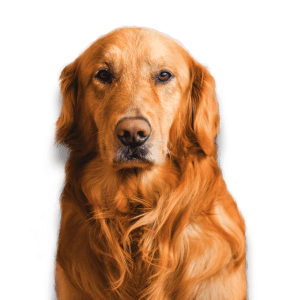
What is it?
Dental disease is common in dogs and in the vast majority of cases is caused by ‘plaque’. Plaque is a film of debris from saliva and bacteria that becomes attached to the surface of the teeth. Over time it can solidify to form ‘calculus’ or ‘tartar’, a brownish-yellow deposit on the teeth.
This calculus is a rough surface where more plaque can attach. Bacteria can then grow readily where the calculus meets the gum line. This causes inflammation and bleeding of the gums. Over time the inflammation damages the ligament attaching the teeth, forming pockets beneath the gum line where more bacteria can grow. Eventually, this damage to the attachment of the teeth leads to painful dental abscesses and loss of teeth.
Why is it important?
Dental disease is thought to affect 70% of adult cats and dogs. A recent study by the Royal Veterinary College has found that dental disease is one of the most important causes of pain and suffering in dogs (Summers et al, 2019). As a result, it is very important to do what we can to improve our pets’ dental health.What is the risk?
Dental disease, if untreated, as well as causing pain to the dog, may lead to bacterial infections of the organs such as the heart, liver, and kidneys.What happens to the dog?
Dogs do not always show that they have dental pain, which is why a regular (6-12 monthly) dental checkup with your vet is very important. Some of the signs of dental disease include:
How does the vet know what is going on?
During the check-up, your vet will ask you questions about the dog’s behaviour, lifestyle, and diet, as well as asking about any signs of dental issues you may have noticed. Your dog’s mouth will be examined and the degree of dental disease is graded according to its severity. If the dog has teeth that are diseased and/or have heavy tartar and inflamed gums, it is likely that a dental procedure will be recommended under a full general anaesthetic. Unfortunately, physical removal of plaque and calculus is the only way it can be treated effectively.What can be done?
Dental work should be carried out under a general anaesthetic by a suitably qualified professional (a veterinary surgeon should perform extractions, veterinary nurses are permitted to scale and polish teeth). It is not recommended to descale a dog's teeth with them awake as this is very stressful and a full descale cannot be done. It is also very easy to miss major problems trying to do dental work conscious.
The dog is anaesthetised and all of the teeth are cleaned using an ultrasonic scaler. Each tooth is examined for signs of disease (pocketing and attachment loss, discolouration, fractures) and any diseased teeth are removed surgically.
Dental radiography (X-ray) provides a great deal of information about the condition of the teeth and roots and helps decision making for treatment such as root canal therapy or extractions. Antibiotics (if appropriate) are given and pain relief is essential when extractions are needed.
How can I protect my pet?
Home dental care is the best way to prevent dental disease.
The aim is to start preventative dental care when the dog is young, to avoid dental disease progressing to cause disease.